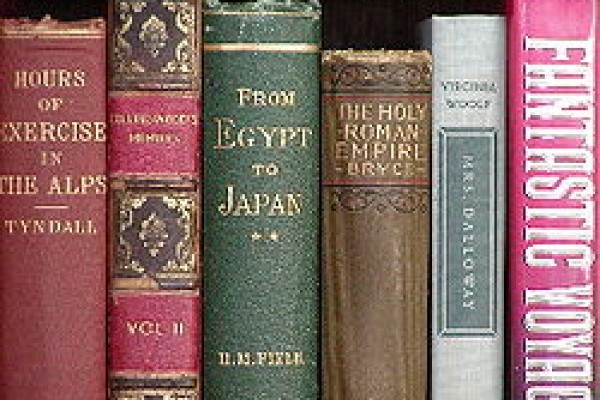
Recognizing Forged or Fake Porcelain Marks
San Francisco, California - February 23, 2008 - In the last or so decade, there has been a huge influx of porcelain items, especially figurines and other decorative porcelain objects, that are marked with what appear to be older European or American marks. Most of these items are of high quality, but are not antique. The vast majority of these come from China, or Asia in general, and usually do not have a country of origin mark.
"We get hundreds of these marks as inquiries from our members" says Lisa Marion of www.Marks4Antiques.com. "Usually, our researchers can tell right away that these lovely porcelain items are made in China; however, many of the marks are so similar to authentic antique marks that require a more detailed look". Marks4Antiques.com continually updates its databases and includes all newer porcelain marks as soon as they are encountered. This way, members of the site can quickly determine the authenticity of their antiques and avoid costly mistakes.
For example, items made for export to the US after 1891, must also declare the country of origin. This requirement was enacted into law based on several Tariff Acts in the 1890s. Older items usually include the country of origin as part of their overall trademark or have the words "Germany" or "England", "France" etc near the actual porcelain mark. However, many recent Asian imports get away with this legal requirement by using a sticker or label, which is often removed or lost after the item's entry to the US.
Luckily, there are some other ways to recognize most of these forged or imitation porcelain marks. Here are some tips that are easy to follow:
1) Examine the mark around the edges using a Magnifying Lens: If the mark appears too perfect and perhaps applied using some industrial machine, then the mark is probably recent. In these cases, the mark is usually stamped or at times slightly raised or impressed. Most items made prior to 1950 had their marks applied by hand, so these stamps would wear out or the firmness with which they were applied varied from worker to worker or over time. Older porcelain marks are not as clear or sharp at the edges.
2) If the mark is a shape or symbol, look closely: Most recent porcelain marks are close imitations of older authentic marks used by Meissen, Sevres, Chantilly, English Staffordshire Potteries (usually Coats of Arms or Crests), Gardner etc. However, almost always they differ in one or two minor details, such as the endings do not curl the same or have symbols that are obscure or are out of scale. Although some older authentic antique marks were applied in free hand style, using an Artist's thin brush, the difference is still visible once you have seen several versions of the original mark.
3) If the mark includes words, read carefully: Often, newer imitation porcelain marks intentionally misspell words, such as "SEVRE" instead of "SEVRES" or "STAFORDSHIRE" instead of "STAFFORDHIRE" etc. Please compare thename you read with the authentic one by running a quick search on Google or eBay.
4) The size of the mark: Typically, newer porcelain marks are larger than the original ones. It is very possible to find a mark that is practically identical to an authentic older one, but its size is 2 or 3 inches across. Older porcelain marks rarely exceed 1 – 1.5 inches.
5) Be aware of the word "CHINA": Because "china" also refers to Dinnerware as in "chinaware", many newer porcelain marks include the word CHINA in the mark, for example "IRONSTONE CHINA" in capital letters, which helps to comply with the country of origin laws but also confuses a collector in thinking that this is part of the original company name. In fact, many marks of older Potteries, especially in England and the US, as well as on many logos of legitimate ca 1890s – 1930s importers of genuine French, German or western porcelain, included the word CHINA as part of their trademark, which is now misused by traders from the East.
6) Copyright symbol: The universal symbol for "copyright" is usually the letter C enclosed in a circle. This is a fairly recent symbol and did not exist during the 19th or earlier centuries. If a mark looks similar to an older or antique porcelain mark and also has this Copyright symbol, then it is a new imitation mark.
7) "VICTORIA" or "VICTORIAN": Although there were a handful of companies that used these words within their logo or as a name of a Pattern, the words "Victoria" and "Victorian" are often seen on newer imitation porcelain marks. Please compare your item with others on Google or eBay to see if you can find other similar ones and see what these sellers have to say. In the vast majority of cases, these words indicate newer pieces.
8) Age & Construction of the piece: Finally, examine the piece for any signs of real age. Most antique porcelain starts to show tiny cracks in the glaze after several decades, especially Earthenware or old glazed Chinaware that has been used extensively, called "crazing". Although many new pieces exhibit similar crazing, the lines appear very bright and white, indicating artificial stress during Firing to create this effect on purpose. Old crazing is usually somewhat discolored since dust and dirt tend to accumulate in these cracks and shows over time. Other reliable signs of age include:
1. The way the mold is put together: older ones tend to be "tighter" with almost no seams,
2. The "blow hole": the tiny opening, usually at the bottom of a porcelain figurine, that allows air to escape from within a piece while in the Kiln, is usually rough and hand-pierced on antique pieces , whereas on new ones it is very "clean" and symmetrical,
3. The base of a figurine or, in the case of chinaware, the foot rim: older pieces exhibit wear and tear or feel somewhat rough to the touch or are slightly discolored or "dirty",
4. The colors: older pieces used softer, more gentle colors and are not too bright, whereas newer pieces tend to be very "intense",
5. The "whiteness": porcelain on older pieces is even and bright; most recent pieces tend to be a slightly grayish or bluish.
As mentioned in the beginning of this article, many newer pieces are of good quality and are often even better alternatives to older pieces for decorative purposes. However, if you are a Collector or an Antiques Dealer trading in Antiques, you certainly want to know…
Accredited media interested in discussing this press release in more detail are encouraged to schedule an interview by sending a request to Contact@Marks4Antiques.com or visit their Web site at Marks4Antique.com
About Marks4Antiques.com
Marks4Antiques.com was created to help Collectors and Dealers to research Antiques & Collectibles. The successful launch of Marks4Ceramics.com in 2004 was quickly followed by Marks4Silver.com in 2006 and then Values4Antiques.com this year. All websites were designed for use online in order to accommodate the growing number of mobile Antiques and Collectibles Dealers that roam the country to different Auctions or Shows and those that sell or buy online (eBay etc). Subscribing to any of the websites provides easy and fast pictorial methods of identifying and elf-appraising items. An active member can also contact the experts of each website for personal assistance when a mark is not already in the database at no additional cost. To facilitate an unbiased Antiques Research & Evaluation environment, no Trade (buying or selling) of items is allowed through these sites as they are totally dedicated to Research. All staff are avid Collectors, Appraisers and professional Dealers. The company is owned and operated in the State of California, USA.
ARTICLE SOURCE: http://www.articlesbase.com/art-articles/recognizing-forged-or-fake-porcelain-marks-342263.html






















